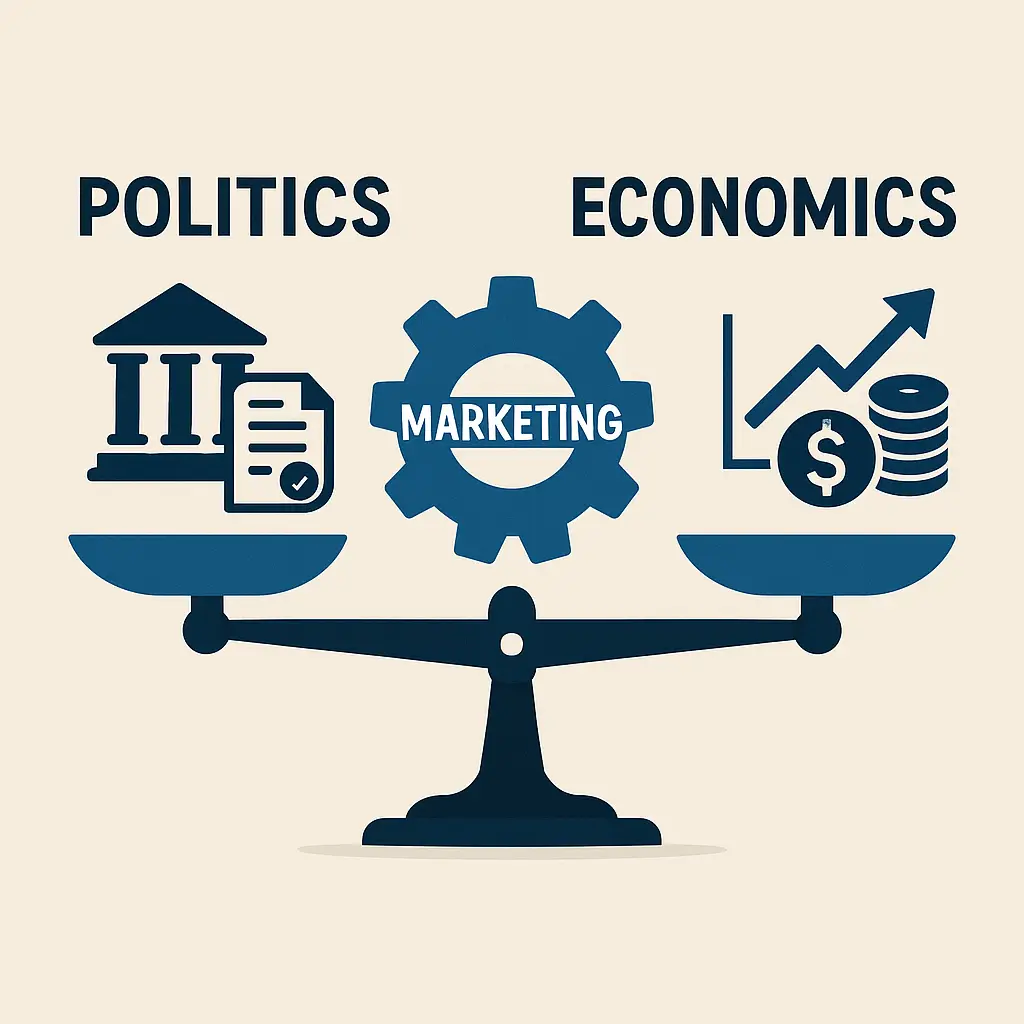Introduction
In today’s rapidly changing business environment, understanding the political and economic forces at play is crucial for any marketer. From government regulations to economic downturns, these external factors can dramatically impact consumer behavior, pricing strategies, and overall campaign effectiveness. This post explores how you can assess and respond to these forces to create resilient, high-performing marketing strategies.
Why Political and Economic Forces Matter in Marketing
- Risk Management: Political instability or sudden policy changes can disrupt supply chains, alter tariffs, or introduce new compliance requirements.
- Consumer Confidence: Economic indicators—like GDP growth, unemployment rates, and inflation—directly influence consumer spending power and sentiment.
- Competitive Advantage: Brands that anticipate and adapt to these forces can position themselves as reliable partners for customers during uncertain times.
Key Political Forces Affecting Marketing
1. Regulatory Environment
Governments impose regulations on advertising, data privacy (e.g., GDPR), product safety, and more. Marketers must ensure campaigns comply with legal requirements to avoid fines and reputational damage.
2. Trade Policies and Tariffs
Changes in trade agreements or tariffs can affect product costs and availability. Companies operating internationally need agile pricing strategies to maintain margins.
3. Political Stability and Governance
In markets with unstable governments, marketers face higher risks—such as currency fluctuations or abrupt policy shifts. A robust political risk assessment helps in deciding where and how to allocate marketing budgets.
Key Economic Forces Shaping Marketing Strategy
1. Economic Growth and Recession Cycles
During economic expansions, consumers are more willing to spend on discretionary items, allowing for premium positioning. In downturns, value-driven messaging and budget-friendly offerings gain traction.
2. Inflation and Purchasing Power
Rising inflation erodes consumer purchasing power. Marketers may need to adjust pricing, offer flexible payment options, or emphasize value propositions to maintain sales volumes.
3. Employment and Wages
High unemployment can reduce overall market spending, but it may also shift demand toward essentials. Understanding labor market trends helps tailor product positioning and promotional channels.
Integrating Political and Economic Analysis into Your Marketing Plan
- Conduct a PESTEL Analysis
- Political: Monitor upcoming elections, regulatory changes, and geopolitical tensions.
- Economic: Track interest rates, consumer confidence indices, and currency trends.
- (Also consider Social, Technological, Environmental, and Legal factors.)
- Scenario Planning
Develop multiple “what-if” scenarios (e.g., best case, worst case) to stress-test your marketing budget, messaging, and channels. - Real-Time Market Intelligence
Use data dashboards and economic indicators to adjust campaigns on-the-fly—shifting spend from high-cost channels to more cost-effective ones during downturns. - Flexible Budgeting
Allocate a portion of your budget to “opportunity reserves” to capitalize on favorable policy changes or economic upswings without overshooting your overall spend.
Case Study: Adapting to Economic Turbulence
Brand X, a consumer-packaged goods company, saw raw material costs spike due to new import tariffs. By reallocating 20% of their media budget from traditional TV to digital channels, they optimized cost-per-acquisition and targeted value-conscious consumers with special bundle offers—resulting in a 15% sales uplift despite higher input costs.
Actionable Tips for Marketers
- Stay Informed: Subscribe to government and economic briefings relevant to your markets.
- Engage Legal & Finance Teams: Work cross-functionally to interpret new regulations or economic shifts quickly.
- Localize Campaigns: Customize messaging for different regions based on their specific political and economic climates.
- Measure and Adapt: Continuously track key performance indicators (KPIs) and be ready to pivot your strategy.
Conclusion
Political and economic forces are ever-present influences that can make or break your marketing efforts. By conducting regular PESTEL analyses, building flexible plans, and staying vigilant about global events, you can turn these external challenges into opportunities. Embrace agility, empower your team with real-time data, and you’ll be well-equipped to navigate whatever the political–economic landscape throws your way.

